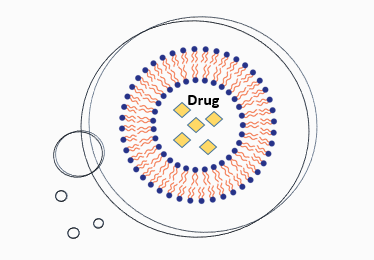Nano-liposomal Drugs

Project Information
- Status: Finished.
We collaborate with Prof. Chezy Barenholtz, inventor of Doxil, the first nanoliposomal drug approved by the FDA, to construct models for molecules that are more easily loaded remotely in high concentration into nano-liposomes and are stable in that environment for extended periods on the shelf (or refrigerator). Dr. Ahuva Cern constructed models which found that many known drugs and drug candidates, more than 300, could be candidates for loading and stability in nanoliposomes. Dr. Ahuva also discovered (patented and published) that nearly 70 FDA approved drugs are among those candidates. However, it is required to decide which of those 70 would benefit from being delivered by nanoliposomes and exploit the EPR effect of porous blood vessels at or near the required delivery site (typical of solid cancers and bacterial infections).
Currently, two Angiotensin Receptor blockers are examined.
Antibacterial Nano-Mupirocin
Nano-mupirocin is a PEGylated nano-liposomal formulation of the antibiotic mupirocin. Nano-mupirocin's development stemmed from a computational study by ISE in our lab, which identified mupirocin among molecules that are good candidates for nano-liposomal delivery. The selection of mupirocin for further development was based on the computational study (related to the chemical structure of mupirocin) and the unique potential advantages of mupirocin encapsulation. Mupirocin is an antibiotic with a unique mode of action, not shared by other commercial antibiotics, active against bacteria found in the CDC's urgent and severe threats list. But due to its rapid metabolism and high protein binding, its efficacy is limited to topical administration. By encapsulating mupirocin in nano-liposomes, the drug was protected in the circulation allowing its activity by injection.
Nano-mupirocin was discovered as a candidate in the Goldblum lab. Experiments were performed at the Barenholz lab and sponsored by a translational grant from the Israeli government (Kamin). The product was then licensed to Integra Holding , who established Rebiotics Rx to develop this product.
doi: https://doi.org/10.1016/j.jconrel.2011.11.029doi: https://doi.org/10.1016/j.jconrel.2013.10.029
doi: https://doi.org/10.1016/j.jconrel.2017.02.015